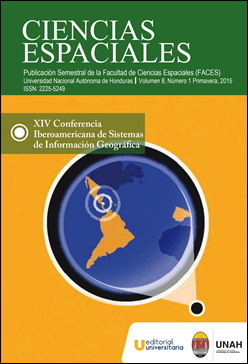Vulnerability Analysis and communities of Coris Plank, Province of Cartago, Costa Rica
DOI:
https://doi.org/10.5377/ce.v8i1.2051Keywords:
Coris, Tablón, Vulnerability, Hazard, ScenariosAbstract
The present research consists of an analysis of vulnerability in the communities of Coris of Cartago and Tablon of El Guarco against the impact of disasters. These communities are contained within the Purires river micro-watershed, in the province of Cartago, Costa Rica. The micro-basin of river Purires is located on the east side of the central region of Costa Rica; it extends 76,2 km² and is part of the upper section of the Reventazon river basin.
The methodology is based on the Participative-Action Qualitative Research framework, within the informal education approach. The main objective of this research is centered upon analyzing the threats and vulnerability to which the communities of Coris and Tablon are exposed. For this, it was necessary to develop an community action plan that attempted to implement recommendations to improve the response capacity of the communities to disaster impacts.
Results report that in Coris there were 18 threats identified, classified as anthropogenic and related to environmental pollution, vandalism, crime. Furthermore, socionatural threats such as landslides and river flooding were identified, as well as natural threats, such as tectonic activity due to local geologic faults that affect the watershed. In Tablon a total of 18 threats were also identified, classified based on their origin as socionatural (of which nine correspond to landslides, five to river flooding and one to erosion and inadequate farming practices), anthropogenic (related to drug consumption and alcohol), and natural (tectonic activity).
The selected threat scenarios in Tablon and Coris were grouped according to their acceptance level into inadmissible and unacceptable, and acceptable and tolerable. This was done with the purpose of reducing its condition through recommendations from the perspective of risk management for disaster prevention.
Revista Ciencias Espaciales, Volumen 8, Número 1 Primavera, 2015; 231-259
Downloads
1309




